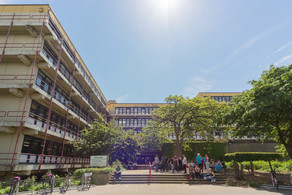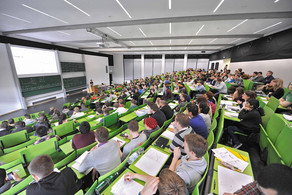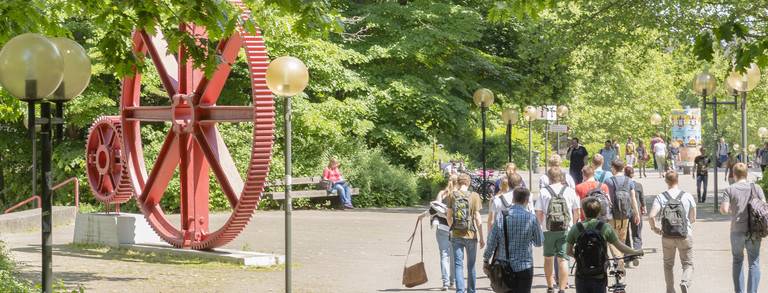Research
Metal-based self-assembled cages or helicates with central cavities can act as containers and allow the recognition of all kinds of analytes inside them. Our targets of choice are metal-based containers with electropositive cavities for anion recognition. Our research benefits from easy and straightforward prepared ligands which can be readily modified to address our needs.
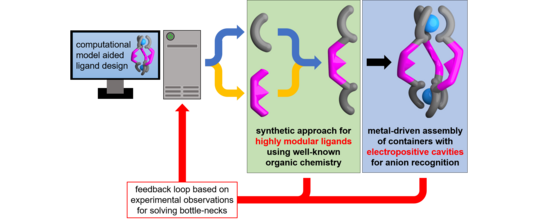
Simple computational modelling is performed prior to the actual synthesis to evaluate the feasibility of a desired container. For example, Spartan models allow us to evaluate possible issues which may arise during the metal-mediated self-assembly process before time is spent on synthesis. The ligand synthesis of ideal candidates usually involves a few but well known organic synthetic procedures followed by complex formation. If bottle-necks arise which cannot be solved straightforward, we usually go back to the drawing board and optimize the target ligand / container by using laboratory observations in a feedback loop fashion.
Target guests of choice are anions with a special focus on the recognition of biologically / environmentally relevant and chiral anions. We are also conducting research on containers with sufficient solubilizing groups to study anion recognition in a realistic aqueous environment to mimic body fluids.
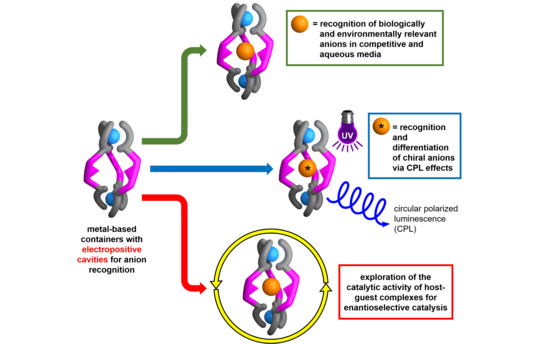
We use common techniques like NMR, UV-Vis or fluorescence spectroscopy paired with methods like ITC or CPL spectroscopy to study binding processes of our containers with anions. Another key aspect of our research is to investigate the catalytic activity of selected host-guest complexes to perform enantioselective catalysis.
If you are interested in supramolecular research with anions and you are currently looking for a position to perform a PhD, master or bachelor thesis, please have a look here.

